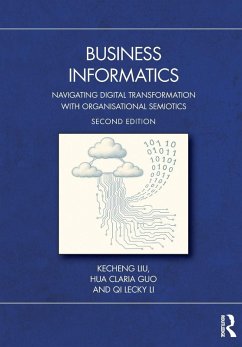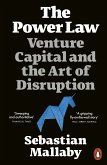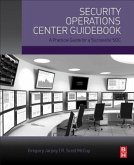Hua Claria Guo, Kecheng Liu, Qi Lecky Li
Business Informatics
Navigating Digital Transformation with Organisational Semiotics
Hua Claria Guo, Kecheng Liu, Qi Lecky Li
Business Informatics
Navigating Digital Transformation with Organisational Semiotics
- Broschiertes Buch
- Merkliste
- Auf die Merkliste
- Bewerten Bewerten
- Teilen
- Produkt teilen
- Produkterinnerung
- Produkterinnerung
The ongoing digitalisation and transformation of business requires new approaches to studying organisations. This fully revised and updated second edition provides an expert exploration of how data and information are managed through the distinctive lenses of business informatics and organisational semiotics. Reaching beyond traditional information systems theory, this book explores how meaning is constructed and how signs and digital resources influence behaviour, decision-making, and innovation. The authors employ a twin worlds concept to help readers understand the intersection between…mehr
Andere Kunden interessierten sich auch für
![The Passion Economy The Passion Economy]() Adam DavidsonThe Passion Economy13,99 €
Adam DavidsonThe Passion Economy13,99 €![Business Information Systems Business Information Systems]() John AjibadeBusiness Information Systems84,99 €
John AjibadeBusiness Information Systems84,99 €![Workshops for Assembling Business Facts Workshops for Assembling Business Facts]() Hyde Dorsey WilliamWorkshops for Assembling Business Facts14,99 €
Hyde Dorsey WilliamWorkshops for Assembling Business Facts14,99 €![Strategic Management of Business-Critical Information Assets Strategic Management of Business-Critical Information Assets]() Denise A. D. BedfordStrategic Management of Business-Critical Information Assets141,99 €
Denise A. D. BedfordStrategic Management of Business-Critical Information Assets141,99 €![ECKM 2020 Proceedings of the 21st European Conference on Knowledge Management ECKM 2020 Proceedings of the 21st European Conference on Knowledge Management]() ECKM 2020 Proceedings of the 21st European Conference on Knowledge Management84,99 €
ECKM 2020 Proceedings of the 21st European Conference on Knowledge Management84,99 €![The Power Law The Power Law]() Sebastian MallabyThe Power Law12,99 €
Sebastian MallabyThe Power Law12,99 €![Security Operations Center Guidebook Security Operations Center Guidebook]() Gregory JarpeySecurity Operations Center Guidebook90,99 €
Gregory JarpeySecurity Operations Center Guidebook90,99 €-
-
-
The ongoing digitalisation and transformation of business requires new approaches to studying organisations. This fully revised and updated second edition provides an expert exploration of how data and information are managed through the distinctive lenses of business informatics and organisational semiotics. Reaching beyond traditional information systems theory, this book explores how meaning is constructed and how signs and digital resources influence behaviour, decision-making, and innovation. The authors employ a twin worlds concept to help readers understand the intersection between operational and digital artefacts and processes. Bridging theory and practice via a series of case studies and real-world examples, this book prepares students to understand, analyse and engage with digitally driven business environments.
Produktdetails
- Produktdetails
- Verlag: Taylor & Francis Ltd
- 2. Auflage
- Seitenzahl: 248
- Erscheinungstermin: 20. November 2025
- Englisch
- Abmessung: 246mm x 174mm
- ISBN-13: 9781041052012
- ISBN-10: 1041052014
- Artikelnr.: 75571477
- Herstellerkennzeichnung
- Libri GmbH
- Europaallee 1
- 36244 Bad Hersfeld
- gpsr@libri.de
- Verlag: Taylor & Francis Ltd
- 2. Auflage
- Seitenzahl: 248
- Erscheinungstermin: 20. November 2025
- Englisch
- Abmessung: 246mm x 174mm
- ISBN-13: 9781041052012
- ISBN-10: 1041052014
- Artikelnr.: 75571477
- Herstellerkennzeichnung
- Libri GmbH
- Europaallee 1
- 36244 Bad Hersfeld
- gpsr@libri.de
Kecheng Liu is a fellow of the British Computer Society and a senior fellow of the Higher Education Academy. With an academic background in computer science (BSc) and information management (PhD), he was appointed to his first professorship in computer science over two decades ago. He is currently a full professor and holds the Chair in Applied Informatics at Henley Business School, University of Reading. Hua Claria Guo is a lecturer in the School of Electronic Engineering and Computer Science at Queen Mary University of London. She holds a PhD in business informatics from the Informatics Research Centre of the University of Reading and an MBA from the Hong Kong University of Science and Technology. Qi Lecky Li is a lecturer in the Department of Digitalisation, Marketing and Entrepreneurship, and faculty member in the Digital Talent Academy at Henley Business School. He earned his PhD in Business Informatics from the Informatics Research Centre at the University of Reading.
CONTENTS
Preface xi
1 Data, Information, and Informatics 1
1.1 Data and Information 1
1.1.1 Data as a Foundation for Information 2
1.1.2 Transforming Data into Meaningful Information 2
1.1.3 The Importance of Distinguishing Data from Information 2
1.2 The Essence of Information 3
1.2.1 Can Information be Seen as an Artefact? 3
1.2.2 Can Information be a Process? 3
1.2.3 Information as a Synthesis of Artefact and Process 3
1.2.4 The Characteristics of Information 3
1.2.5 The Value of Information 5
1.3 The Notion of a Sign 6
1.4 Sense-Making Using a Sign 7
1.5 Sign Categories and Functions 9
1.6 Functions of Signs in Semiosis 10
1.7 Summary 10
Exercise 12
Bibliography 14
2 Virtual and Physical Resources in the Twin Worlds 15
2.1 Physical and Virtual Resources in Business 15
2.2 Types of Economies 16
2.3 Common Features in Digital Business Models 17
2.4 The Interplay between the Two Worlds 17
2.5 Business Informatics in Understanding the Twin Worlds 18
Exercise 20
Bibliography 21
3 Organisations as Information Systems 22
3.1 A Semiotic View of Organisations 22
3.2 Anatomy of the Organisational Onion 23
3.2.1 The Informal Layer 23
3.2.2 The Formal Layer 24
3.2.3 The Technical Layer 24
3.3 Relationships between the Layers 25
3.3.1 Interdependence between Layers 26
3.3.2 Conflicts between Layers 26
3.3.3 Alignment for Organisational Effectiveness 26
Misalignment Between Organisational Culture and Information System 28
Exercise 28
Bibliography 29
4 Information Systems in Business 30
4.1 Organisational Structure and Information Systems 30
4.1.1 Vertical Structure: Management Hierarchy 30
4.1.2 Horizontal Structure: Functional Units 31
4.1.3 Information Systems at Different Levels 32
4.1.4 Integration of Information Systems 32
4.2 Types of Information Systems 33
4.2.1 Transaction Processing Systems (TPS) 33
4.2.2 Management Information Systems (MIS) 34
4.2.3 Knowledge Work Systems (KWS) 34
4.2.4 Decision Support Systems (DSS) 35
4.2.5 Executive Information Systems (EIS) 35
4.3 Information Systems Integration 36
4.4 Business Informatics in Organisations 38
Exercise 42
Bibliography 44
5 Information Systems Planning 45
5.1 Understanding the Scope of ISP 45
5.2 Key Drivers for ISP 47
5.3 The Scope and Purposes of Information Systems Planning (ISP) 47
5.4 Roadmap to ISP for Organisations 48
5.4.1 Strategic Planning 48
5.4.2 Organisational Information Requirements Analysis 49
5.4.3 Resource Allocation 49
5.4.4 Project Planning 50
5.5 Methods for ISP 505.5.1 PESTLE Analysis 51
5.5.2 Balanced Scorecard 53
5.5.3 Strategic Competitive Model 56
5.5.4 Strategic Alignment Model (SAM) 58
5.5.5 Critical Success Factors (CSF) Analysis in ISP 61
5.5.6 Project Planning 64
Exercise 65
Bibliography 67
6 Requirements Engineering for Information Systems Development 68
6.1 The Process of Requirements Engineering 68
6.2 Requirements Engineering Stages and Activities 71
6.3 Types of Requirements in Information Systems 73
6.4 Functional Requirements 74
6.5 Non-Functional Requirements 78
6.6 Other Requirements 80
Exercise 81
Bibliography 82
7 Information Systems Methodology 83
7.1 Principles of Information Systems Development (ISD) Methodology 83
7.2 ISD Lifecycle 84
7.3 The Value and Limitation of ISDL 86
7.4 Methods and Techniques for ISD 887.4.1 Methods Applicable for
Preliminary Investigation 88
7.4.2 Methods Applicable for Requirements Gathering and Analysis 89
7.5 Additional Methods Applicable to ISD 90
7.5.1 Use Case Diagram 91
7.5.2 Class Diagram 94
7.5.3 Business Process Diagram 97
Exercise 100
Bibliography 101
8 Language Acts and Information Effects 103
8.1 Sign, Complex Sign, and Sign System in Human Communication 103
8.2 Language Acts and Their Effects 104
8.3 Doing Business with Information 106
Exercise 107
Bibliography 108
9 Organisational Analysis and Systems Co-design 109
9.1 Semiotics of Organisations 109
9.2 Semiotic Processes and Activities in Business Organisations 110
9.3 Morphological Analysis of Organisations 114
9.4 Co-design of Organisational and Technical Systems 116
9.5 Infrastructure Analysis 1199.5.1 Stakeholder Analysis 121
9.5.2 Collateral Analysis 123
9.6 Change Impact Analysis 125
Exercise 128
Bibliography 128
10 Knowledge Management in Intelligent Organisations 130
10.1 Characteristics of an Intelligent Business Organisation 130
10.2 Norms as Knowledge 132
10.3 Taxonomy of Norms 134
10.4 Norms Governing Organisations 13610.4.1 Legal Conceptions Underpinning
Business Norms 137
10.4.2 Governing Organisations through Standing Orders and
Status Norms 138
10.5 Specification of Norms for System Design 140
Exercise 143
Bibliography 143
11 Enterprise Architecture and Value Network 145
11.1 Key Elements in Enterprise Architecture 145
11.2 EA: A Strategic Framework for Organisational Excellence 151
11.3 EA Frameworks 15311.3.1 Zachman Framework 153
11.3.2 The Open Group Architecture Framework (TOGAF) 157
11.3.3 ArchiMate 161
11.3.4 Comparison and Use of the Three Frameworks 164
Exercise: Exploring the Role of EA in Value Networks 166
11.4 Enterprise Value Network 16711.4.1 The Value Chain Model 167
11.4.2 Supply Chain Management 172
Exercises 17611.4.3 Customer Relationship Management 177
11.4.4 Revised Value Chain Management 180
11.4.5 IS in Enterprise 182
Exercise 184
Bibliography 185
12 Digitalisation and Transformation in Organisations 186
12.1 Digital Innovation 186
12.2 Digitalisation 189
12.3 Servitisation with Digital Capabilities 192
12.4 Digital Servitisation: Blending Digitalisation with Servitisation 193
12.5 Digital Transformation: A Strategic Imperative for Modern
Organisations 196
12.6 Semiotic Analysis of Digital Transformation 199
12.7 Conclusion 202
Exercise 203
Bibliography 203
13 Digital Business Ecosystems 204
13.1 Unleashing the Power of Information: The Fourth Industrial
Revolution 204
13.2 Modern Business Types 206
13.3 Digital Business Ecosystems 207
13.3.1 DBE as a Paradigm 208
13.3.2 Essential Premises for DBE 209
13.3.3 Advantages of DBE 210
13.3.4 Challenges in Building and Maintaining DBE 211
13.4 Value Network in Business Ecosystems 213
13.4.1 Value Structuring and Network 215
13.4.2 Insight into Customer Relationships 216
13.5 Conclusion 218
Exercise: Collaborative Competition ("Co-petition") in Value Networks 218
Bibliography 219
14 Ethical and Moral Considerations of Responsible Organisations 220
14.1 Legal, Ethical, and Moral Issues in Business Informatics 220
14.2 Informatics in Practice with Due Considerations 222
14.2.1 Key Pieces of Legislation 222
14.2.2 Ethical Issues Related to Informatics 224
14.2.3 Moral Issues in Informatics 225
14.3 Core Values of a Responsible Organisation 228
Exercise 230
Bibliography 231
15 Digital Leadership for Transformation 232
15.1 Digital Leadership Competencies 232
15.1.1 Digital Competence Framework 233
15.1.2 Digital Leadership Competence Framework 235
15.2 Digital Leadership in the Transformation Journey 23715.2.1 Five Steps
for Digital Leadership in the Transformation
Journey 238
15.2.2 Guiding the Transformation Journey with Organisational
Morphology 239
15.3 Effective Implementation of Transformation 240
15.3.1 Modern Leadership Through Interdisciplinary Collaboration 241
15.3.2 Change Management 242
Exercise 245
Bibliography 246
Index 247
Preface xi
1 Data, Information, and Informatics 1
1.1 Data and Information 1
1.1.1 Data as a Foundation for Information 2
1.1.2 Transforming Data into Meaningful Information 2
1.1.3 The Importance of Distinguishing Data from Information 2
1.2 The Essence of Information 3
1.2.1 Can Information be Seen as an Artefact? 3
1.2.2 Can Information be a Process? 3
1.2.3 Information as a Synthesis of Artefact and Process 3
1.2.4 The Characteristics of Information 3
1.2.5 The Value of Information 5
1.3 The Notion of a Sign 6
1.4 Sense-Making Using a Sign 7
1.5 Sign Categories and Functions 9
1.6 Functions of Signs in Semiosis 10
1.7 Summary 10
Exercise 12
Bibliography 14
2 Virtual and Physical Resources in the Twin Worlds 15
2.1 Physical and Virtual Resources in Business 15
2.2 Types of Economies 16
2.3 Common Features in Digital Business Models 17
2.4 The Interplay between the Two Worlds 17
2.5 Business Informatics in Understanding the Twin Worlds 18
Exercise 20
Bibliography 21
3 Organisations as Information Systems 22
3.1 A Semiotic View of Organisations 22
3.2 Anatomy of the Organisational Onion 23
3.2.1 The Informal Layer 23
3.2.2 The Formal Layer 24
3.2.3 The Technical Layer 24
3.3 Relationships between the Layers 25
3.3.1 Interdependence between Layers 26
3.3.2 Conflicts between Layers 26
3.3.3 Alignment for Organisational Effectiveness 26
Misalignment Between Organisational Culture and Information System 28
Exercise 28
Bibliography 29
4 Information Systems in Business 30
4.1 Organisational Structure and Information Systems 30
4.1.1 Vertical Structure: Management Hierarchy 30
4.1.2 Horizontal Structure: Functional Units 31
4.1.3 Information Systems at Different Levels 32
4.1.4 Integration of Information Systems 32
4.2 Types of Information Systems 33
4.2.1 Transaction Processing Systems (TPS) 33
4.2.2 Management Information Systems (MIS) 34
4.2.3 Knowledge Work Systems (KWS) 34
4.2.4 Decision Support Systems (DSS) 35
4.2.5 Executive Information Systems (EIS) 35
4.3 Information Systems Integration 36
4.4 Business Informatics in Organisations 38
Exercise 42
Bibliography 44
5 Information Systems Planning 45
5.1 Understanding the Scope of ISP 45
5.2 Key Drivers for ISP 47
5.3 The Scope and Purposes of Information Systems Planning (ISP) 47
5.4 Roadmap to ISP for Organisations 48
5.4.1 Strategic Planning 48
5.4.2 Organisational Information Requirements Analysis 49
5.4.3 Resource Allocation 49
5.4.4 Project Planning 50
5.5 Methods for ISP 505.5.1 PESTLE Analysis 51
5.5.2 Balanced Scorecard 53
5.5.3 Strategic Competitive Model 56
5.5.4 Strategic Alignment Model (SAM) 58
5.5.5 Critical Success Factors (CSF) Analysis in ISP 61
5.5.6 Project Planning 64
Exercise 65
Bibliography 67
6 Requirements Engineering for Information Systems Development 68
6.1 The Process of Requirements Engineering 68
6.2 Requirements Engineering Stages and Activities 71
6.3 Types of Requirements in Information Systems 73
6.4 Functional Requirements 74
6.5 Non-Functional Requirements 78
6.6 Other Requirements 80
Exercise 81
Bibliography 82
7 Information Systems Methodology 83
7.1 Principles of Information Systems Development (ISD) Methodology 83
7.2 ISD Lifecycle 84
7.3 The Value and Limitation of ISDL 86
7.4 Methods and Techniques for ISD 887.4.1 Methods Applicable for
Preliminary Investigation 88
7.4.2 Methods Applicable for Requirements Gathering and Analysis 89
7.5 Additional Methods Applicable to ISD 90
7.5.1 Use Case Diagram 91
7.5.2 Class Diagram 94
7.5.3 Business Process Diagram 97
Exercise 100
Bibliography 101
8 Language Acts and Information Effects 103
8.1 Sign, Complex Sign, and Sign System in Human Communication 103
8.2 Language Acts and Their Effects 104
8.3 Doing Business with Information 106
Exercise 107
Bibliography 108
9 Organisational Analysis and Systems Co-design 109
9.1 Semiotics of Organisations 109
9.2 Semiotic Processes and Activities in Business Organisations 110
9.3 Morphological Analysis of Organisations 114
9.4 Co-design of Organisational and Technical Systems 116
9.5 Infrastructure Analysis 1199.5.1 Stakeholder Analysis 121
9.5.2 Collateral Analysis 123
9.6 Change Impact Analysis 125
Exercise 128
Bibliography 128
10 Knowledge Management in Intelligent Organisations 130
10.1 Characteristics of an Intelligent Business Organisation 130
10.2 Norms as Knowledge 132
10.3 Taxonomy of Norms 134
10.4 Norms Governing Organisations 13610.4.1 Legal Conceptions Underpinning
Business Norms 137
10.4.2 Governing Organisations through Standing Orders and
Status Norms 138
10.5 Specification of Norms for System Design 140
Exercise 143
Bibliography 143
11 Enterprise Architecture and Value Network 145
11.1 Key Elements in Enterprise Architecture 145
11.2 EA: A Strategic Framework for Organisational Excellence 151
11.3 EA Frameworks 15311.3.1 Zachman Framework 153
11.3.2 The Open Group Architecture Framework (TOGAF) 157
11.3.3 ArchiMate 161
11.3.4 Comparison and Use of the Three Frameworks 164
Exercise: Exploring the Role of EA in Value Networks 166
11.4 Enterprise Value Network 16711.4.1 The Value Chain Model 167
11.4.2 Supply Chain Management 172
Exercises 17611.4.3 Customer Relationship Management 177
11.4.4 Revised Value Chain Management 180
11.4.5 IS in Enterprise 182
Exercise 184
Bibliography 185
12 Digitalisation and Transformation in Organisations 186
12.1 Digital Innovation 186
12.2 Digitalisation 189
12.3 Servitisation with Digital Capabilities 192
12.4 Digital Servitisation: Blending Digitalisation with Servitisation 193
12.5 Digital Transformation: A Strategic Imperative for Modern
Organisations 196
12.6 Semiotic Analysis of Digital Transformation 199
12.7 Conclusion 202
Exercise 203
Bibliography 203
13 Digital Business Ecosystems 204
13.1 Unleashing the Power of Information: The Fourth Industrial
Revolution 204
13.2 Modern Business Types 206
13.3 Digital Business Ecosystems 207
13.3.1 DBE as a Paradigm 208
13.3.2 Essential Premises for DBE 209
13.3.3 Advantages of DBE 210
13.3.4 Challenges in Building and Maintaining DBE 211
13.4 Value Network in Business Ecosystems 213
13.4.1 Value Structuring and Network 215
13.4.2 Insight into Customer Relationships 216
13.5 Conclusion 218
Exercise: Collaborative Competition ("Co-petition") in Value Networks 218
Bibliography 219
14 Ethical and Moral Considerations of Responsible Organisations 220
14.1 Legal, Ethical, and Moral Issues in Business Informatics 220
14.2 Informatics in Practice with Due Considerations 222
14.2.1 Key Pieces of Legislation 222
14.2.2 Ethical Issues Related to Informatics 224
14.2.3 Moral Issues in Informatics 225
14.3 Core Values of a Responsible Organisation 228
Exercise 230
Bibliography 231
15 Digital Leadership for Transformation 232
15.1 Digital Leadership Competencies 232
15.1.1 Digital Competence Framework 233
15.1.2 Digital Leadership Competence Framework 235
15.2 Digital Leadership in the Transformation Journey 23715.2.1 Five Steps
for Digital Leadership in the Transformation
Journey 238
15.2.2 Guiding the Transformation Journey with Organisational
Morphology 239
15.3 Effective Implementation of Transformation 240
15.3.1 Modern Leadership Through Interdisciplinary Collaboration 241
15.3.2 Change Management 242
Exercise 245
Bibliography 246
Index 247
CONTENTS
Preface xi
1 Data, Information, and Informatics 1
1.1 Data and Information 1
1.1.1 Data as a Foundation for Information 2
1.1.2 Transforming Data into Meaningful Information 2
1.1.3 The Importance of Distinguishing Data from Information 2
1.2 The Essence of Information 3
1.2.1 Can Information be Seen as an Artefact? 3
1.2.2 Can Information be a Process? 3
1.2.3 Information as a Synthesis of Artefact and Process 3
1.2.4 The Characteristics of Information 3
1.2.5 The Value of Information 5
1.3 The Notion of a Sign 6
1.4 Sense-Making Using a Sign 7
1.5 Sign Categories and Functions 9
1.6 Functions of Signs in Semiosis 10
1.7 Summary 10
Exercise 12
Bibliography 14
2 Virtual and Physical Resources in the Twin Worlds 15
2.1 Physical and Virtual Resources in Business 15
2.2 Types of Economies 16
2.3 Common Features in Digital Business Models 17
2.4 The Interplay between the Two Worlds 17
2.5 Business Informatics in Understanding the Twin Worlds 18
Exercise 20
Bibliography 21
3 Organisations as Information Systems 22
3.1 A Semiotic View of Organisations 22
3.2 Anatomy of the Organisational Onion 23
3.2.1 The Informal Layer 23
3.2.2 The Formal Layer 24
3.2.3 The Technical Layer 24
3.3 Relationships between the Layers 25
3.3.1 Interdependence between Layers 26
3.3.2 Conflicts between Layers 26
3.3.3 Alignment for Organisational Effectiveness 26
Misalignment Between Organisational Culture and Information System 28
Exercise 28
Bibliography 29
4 Information Systems in Business 30
4.1 Organisational Structure and Information Systems 30
4.1.1 Vertical Structure: Management Hierarchy 30
4.1.2 Horizontal Structure: Functional Units 31
4.1.3 Information Systems at Different Levels 32
4.1.4 Integration of Information Systems 32
4.2 Types of Information Systems 33
4.2.1 Transaction Processing Systems (TPS) 33
4.2.2 Management Information Systems (MIS) 34
4.2.3 Knowledge Work Systems (KWS) 34
4.2.4 Decision Support Systems (DSS) 35
4.2.5 Executive Information Systems (EIS) 35
4.3 Information Systems Integration 36
4.4 Business Informatics in Organisations 38
Exercise 42
Bibliography 44
5 Information Systems Planning 45
5.1 Understanding the Scope of ISP 45
5.2 Key Drivers for ISP 47
5.3 The Scope and Purposes of Information Systems Planning (ISP) 47
5.4 Roadmap to ISP for Organisations 48
5.4.1 Strategic Planning 48
5.4.2 Organisational Information Requirements Analysis 49
5.4.3 Resource Allocation 49
5.4.4 Project Planning 50
5.5 Methods for ISP 505.5.1 PESTLE Analysis 51
5.5.2 Balanced Scorecard 53
5.5.3 Strategic Competitive Model 56
5.5.4 Strategic Alignment Model (SAM) 58
5.5.5 Critical Success Factors (CSF) Analysis in ISP 61
5.5.6 Project Planning 64
Exercise 65
Bibliography 67
6 Requirements Engineering for Information Systems Development 68
6.1 The Process of Requirements Engineering 68
6.2 Requirements Engineering Stages and Activities 71
6.3 Types of Requirements in Information Systems 73
6.4 Functional Requirements 74
6.5 Non-Functional Requirements 78
6.6 Other Requirements 80
Exercise 81
Bibliography 82
7 Information Systems Methodology 83
7.1 Principles of Information Systems Development (ISD) Methodology 83
7.2 ISD Lifecycle 84
7.3 The Value and Limitation of ISDL 86
7.4 Methods and Techniques for ISD 887.4.1 Methods Applicable for
Preliminary Investigation 88
7.4.2 Methods Applicable for Requirements Gathering and Analysis 89
7.5 Additional Methods Applicable to ISD 90
7.5.1 Use Case Diagram 91
7.5.2 Class Diagram 94
7.5.3 Business Process Diagram 97
Exercise 100
Bibliography 101
8 Language Acts and Information Effects 103
8.1 Sign, Complex Sign, and Sign System in Human Communication 103
8.2 Language Acts and Their Effects 104
8.3 Doing Business with Information 106
Exercise 107
Bibliography 108
9 Organisational Analysis and Systems Co-design 109
9.1 Semiotics of Organisations 109
9.2 Semiotic Processes and Activities in Business Organisations 110
9.3 Morphological Analysis of Organisations 114
9.4 Co-design of Organisational and Technical Systems 116
9.5 Infrastructure Analysis 1199.5.1 Stakeholder Analysis 121
9.5.2 Collateral Analysis 123
9.6 Change Impact Analysis 125
Exercise 128
Bibliography 128
10 Knowledge Management in Intelligent Organisations 130
10.1 Characteristics of an Intelligent Business Organisation 130
10.2 Norms as Knowledge 132
10.3 Taxonomy of Norms 134
10.4 Norms Governing Organisations 13610.4.1 Legal Conceptions Underpinning
Business Norms 137
10.4.2 Governing Organisations through Standing Orders and
Status Norms 138
10.5 Specification of Norms for System Design 140
Exercise 143
Bibliography 143
11 Enterprise Architecture and Value Network 145
11.1 Key Elements in Enterprise Architecture 145
11.2 EA: A Strategic Framework for Organisational Excellence 151
11.3 EA Frameworks 15311.3.1 Zachman Framework 153
11.3.2 The Open Group Architecture Framework (TOGAF) 157
11.3.3 ArchiMate 161
11.3.4 Comparison and Use of the Three Frameworks 164
Exercise: Exploring the Role of EA in Value Networks 166
11.4 Enterprise Value Network 16711.4.1 The Value Chain Model 167
11.4.2 Supply Chain Management 172
Exercises 17611.4.3 Customer Relationship Management 177
11.4.4 Revised Value Chain Management 180
11.4.5 IS in Enterprise 182
Exercise 184
Bibliography 185
12 Digitalisation and Transformation in Organisations 186
12.1 Digital Innovation 186
12.2 Digitalisation 189
12.3 Servitisation with Digital Capabilities 192
12.4 Digital Servitisation: Blending Digitalisation with Servitisation 193
12.5 Digital Transformation: A Strategic Imperative for Modern
Organisations 196
12.6 Semiotic Analysis of Digital Transformation 199
12.7 Conclusion 202
Exercise 203
Bibliography 203
13 Digital Business Ecosystems 204
13.1 Unleashing the Power of Information: The Fourth Industrial
Revolution 204
13.2 Modern Business Types 206
13.3 Digital Business Ecosystems 207
13.3.1 DBE as a Paradigm 208
13.3.2 Essential Premises for DBE 209
13.3.3 Advantages of DBE 210
13.3.4 Challenges in Building and Maintaining DBE 211
13.4 Value Network in Business Ecosystems 213
13.4.1 Value Structuring and Network 215
13.4.2 Insight into Customer Relationships 216
13.5 Conclusion 218
Exercise: Collaborative Competition ("Co-petition") in Value Networks 218
Bibliography 219
14 Ethical and Moral Considerations of Responsible Organisations 220
14.1 Legal, Ethical, and Moral Issues in Business Informatics 220
14.2 Informatics in Practice with Due Considerations 222
14.2.1 Key Pieces of Legislation 222
14.2.2 Ethical Issues Related to Informatics 224
14.2.3 Moral Issues in Informatics 225
14.3 Core Values of a Responsible Organisation 228
Exercise 230
Bibliography 231
15 Digital Leadership for Transformation 232
15.1 Digital Leadership Competencies 232
15.1.1 Digital Competence Framework 233
15.1.2 Digital Leadership Competence Framework 235
15.2 Digital Leadership in the Transformation Journey 23715.2.1 Five Steps
for Digital Leadership in the Transformation
Journey 238
15.2.2 Guiding the Transformation Journey with Organisational
Morphology 239
15.3 Effective Implementation of Transformation 240
15.3.1 Modern Leadership Through Interdisciplinary Collaboration 241
15.3.2 Change Management 242
Exercise 245
Bibliography 246
Index 247
Preface xi
1 Data, Information, and Informatics 1
1.1 Data and Information 1
1.1.1 Data as a Foundation for Information 2
1.1.2 Transforming Data into Meaningful Information 2
1.1.3 The Importance of Distinguishing Data from Information 2
1.2 The Essence of Information 3
1.2.1 Can Information be Seen as an Artefact? 3
1.2.2 Can Information be a Process? 3
1.2.3 Information as a Synthesis of Artefact and Process 3
1.2.4 The Characteristics of Information 3
1.2.5 The Value of Information 5
1.3 The Notion of a Sign 6
1.4 Sense-Making Using a Sign 7
1.5 Sign Categories and Functions 9
1.6 Functions of Signs in Semiosis 10
1.7 Summary 10
Exercise 12
Bibliography 14
2 Virtual and Physical Resources in the Twin Worlds 15
2.1 Physical and Virtual Resources in Business 15
2.2 Types of Economies 16
2.3 Common Features in Digital Business Models 17
2.4 The Interplay between the Two Worlds 17
2.5 Business Informatics in Understanding the Twin Worlds 18
Exercise 20
Bibliography 21
3 Organisations as Information Systems 22
3.1 A Semiotic View of Organisations 22
3.2 Anatomy of the Organisational Onion 23
3.2.1 The Informal Layer 23
3.2.2 The Formal Layer 24
3.2.3 The Technical Layer 24
3.3 Relationships between the Layers 25
3.3.1 Interdependence between Layers 26
3.3.2 Conflicts between Layers 26
3.3.3 Alignment for Organisational Effectiveness 26
Misalignment Between Organisational Culture and Information System 28
Exercise 28
Bibliography 29
4 Information Systems in Business 30
4.1 Organisational Structure and Information Systems 30
4.1.1 Vertical Structure: Management Hierarchy 30
4.1.2 Horizontal Structure: Functional Units 31
4.1.3 Information Systems at Different Levels 32
4.1.4 Integration of Information Systems 32
4.2 Types of Information Systems 33
4.2.1 Transaction Processing Systems (TPS) 33
4.2.2 Management Information Systems (MIS) 34
4.2.3 Knowledge Work Systems (KWS) 34
4.2.4 Decision Support Systems (DSS) 35
4.2.5 Executive Information Systems (EIS) 35
4.3 Information Systems Integration 36
4.4 Business Informatics in Organisations 38
Exercise 42
Bibliography 44
5 Information Systems Planning 45
5.1 Understanding the Scope of ISP 45
5.2 Key Drivers for ISP 47
5.3 The Scope and Purposes of Information Systems Planning (ISP) 47
5.4 Roadmap to ISP for Organisations 48
5.4.1 Strategic Planning 48
5.4.2 Organisational Information Requirements Analysis 49
5.4.3 Resource Allocation 49
5.4.4 Project Planning 50
5.5 Methods for ISP 505.5.1 PESTLE Analysis 51
5.5.2 Balanced Scorecard 53
5.5.3 Strategic Competitive Model 56
5.5.4 Strategic Alignment Model (SAM) 58
5.5.5 Critical Success Factors (CSF) Analysis in ISP 61
5.5.6 Project Planning 64
Exercise 65
Bibliography 67
6 Requirements Engineering for Information Systems Development 68
6.1 The Process of Requirements Engineering 68
6.2 Requirements Engineering Stages and Activities 71
6.3 Types of Requirements in Information Systems 73
6.4 Functional Requirements 74
6.5 Non-Functional Requirements 78
6.6 Other Requirements 80
Exercise 81
Bibliography 82
7 Information Systems Methodology 83
7.1 Principles of Information Systems Development (ISD) Methodology 83
7.2 ISD Lifecycle 84
7.3 The Value and Limitation of ISDL 86
7.4 Methods and Techniques for ISD 887.4.1 Methods Applicable for
Preliminary Investigation 88
7.4.2 Methods Applicable for Requirements Gathering and Analysis 89
7.5 Additional Methods Applicable to ISD 90
7.5.1 Use Case Diagram 91
7.5.2 Class Diagram 94
7.5.3 Business Process Diagram 97
Exercise 100
Bibliography 101
8 Language Acts and Information Effects 103
8.1 Sign, Complex Sign, and Sign System in Human Communication 103
8.2 Language Acts and Their Effects 104
8.3 Doing Business with Information 106
Exercise 107
Bibliography 108
9 Organisational Analysis and Systems Co-design 109
9.1 Semiotics of Organisations 109
9.2 Semiotic Processes and Activities in Business Organisations 110
9.3 Morphological Analysis of Organisations 114
9.4 Co-design of Organisational and Technical Systems 116
9.5 Infrastructure Analysis 1199.5.1 Stakeholder Analysis 121
9.5.2 Collateral Analysis 123
9.6 Change Impact Analysis 125
Exercise 128
Bibliography 128
10 Knowledge Management in Intelligent Organisations 130
10.1 Characteristics of an Intelligent Business Organisation 130
10.2 Norms as Knowledge 132
10.3 Taxonomy of Norms 134
10.4 Norms Governing Organisations 13610.4.1 Legal Conceptions Underpinning
Business Norms 137
10.4.2 Governing Organisations through Standing Orders and
Status Norms 138
10.5 Specification of Norms for System Design 140
Exercise 143
Bibliography 143
11 Enterprise Architecture and Value Network 145
11.1 Key Elements in Enterprise Architecture 145
11.2 EA: A Strategic Framework for Organisational Excellence 151
11.3 EA Frameworks 15311.3.1 Zachman Framework 153
11.3.2 The Open Group Architecture Framework (TOGAF) 157
11.3.3 ArchiMate 161
11.3.4 Comparison and Use of the Three Frameworks 164
Exercise: Exploring the Role of EA in Value Networks 166
11.4 Enterprise Value Network 16711.4.1 The Value Chain Model 167
11.4.2 Supply Chain Management 172
Exercises 17611.4.3 Customer Relationship Management 177
11.4.4 Revised Value Chain Management 180
11.4.5 IS in Enterprise 182
Exercise 184
Bibliography 185
12 Digitalisation and Transformation in Organisations 186
12.1 Digital Innovation 186
12.2 Digitalisation 189
12.3 Servitisation with Digital Capabilities 192
12.4 Digital Servitisation: Blending Digitalisation with Servitisation 193
12.5 Digital Transformation: A Strategic Imperative for Modern
Organisations 196
12.6 Semiotic Analysis of Digital Transformation 199
12.7 Conclusion 202
Exercise 203
Bibliography 203
13 Digital Business Ecosystems 204
13.1 Unleashing the Power of Information: The Fourth Industrial
Revolution 204
13.2 Modern Business Types 206
13.3 Digital Business Ecosystems 207
13.3.1 DBE as a Paradigm 208
13.3.2 Essential Premises for DBE 209
13.3.3 Advantages of DBE 210
13.3.4 Challenges in Building and Maintaining DBE 211
13.4 Value Network in Business Ecosystems 213
13.4.1 Value Structuring and Network 215
13.4.2 Insight into Customer Relationships 216
13.5 Conclusion 218
Exercise: Collaborative Competition ("Co-petition") in Value Networks 218
Bibliography 219
14 Ethical and Moral Considerations of Responsible Organisations 220
14.1 Legal, Ethical, and Moral Issues in Business Informatics 220
14.2 Informatics in Practice with Due Considerations 222
14.2.1 Key Pieces of Legislation 222
14.2.2 Ethical Issues Related to Informatics 224
14.2.3 Moral Issues in Informatics 225
14.3 Core Values of a Responsible Organisation 228
Exercise 230
Bibliography 231
15 Digital Leadership for Transformation 232
15.1 Digital Leadership Competencies 232
15.1.1 Digital Competence Framework 233
15.1.2 Digital Leadership Competence Framework 235
15.2 Digital Leadership in the Transformation Journey 23715.2.1 Five Steps
for Digital Leadership in the Transformation
Journey 238
15.2.2 Guiding the Transformation Journey with Organisational
Morphology 239
15.3 Effective Implementation of Transformation 240
15.3.1 Modern Leadership Through Interdisciplinary Collaboration 241
15.3.2 Change Management 242
Exercise 245
Bibliography 246
Index 247








